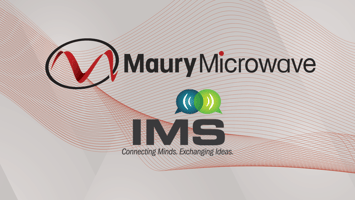The Paris Expo Porte de Versailles is packed with various products and solutions for Europe's...
How Can I Optimize Sub-THz System Performance?
The sub-THz spectrum enables innovation in areas such as 6G, high-resolution security imaging, and radar systems. This post explores emerging applications within this spectrum, the role of waveguide tuners for precision testing, and essential tuner capabilities.
Sub-THz Applications
Key areas benefiting from the sub-THz range include:
- 6G communications: Sub-THz frequencies are targeted to enable high-speed, high-capacity 6G communications. These next-generation networks provide ultra-high data rates that are significantly faster than current 5G systems, with reports of researchers already reaching 100 Gbpsi. This allows for near-instantaneous upload and downloads of data-intensive files. Additionally, 6G supports real-time applications that require low-latency and high reliability, such as autonomous systems.
- Security and imaging scanners: Electromagnetic waves at sub-THz frequencies strike a balance between penetrating varied materials effectively and providing high-resolution imagery. These capabilities can enhance the detection of concealed objects during security screenings, improving safety and detection capability.
- Short-range radar: Shorter wavelengths in the sub-THz range enhance short-range radar systems, enabling higher resolution and finer object detection for capturing intricate object details and distinguishing between closely spaced targets.
Waveguide Tuners: Enabling Precision Sub-THz Testing
Waveguide tuners, such as the Maury Microwave NanoTM Series (NT-series), are precision devices that manipulate and control the impedance presented to a device under test (DUT). Primary tuner applications for sub-THz testing include load pull and noise parameters extraction.
Load Pull
Load pull is the process of changing the load impedance presented to a DUT, commonly a transistor, in order to measure its performance characteristics under varying large signal conditions. Impedances are systematically changed while parameters such as output power, gain and efficiency are measured or calculatedii. Performing load pull measurements is an important step in characterizing a device to enable engineers to design matching circuits to optimize for desired parameters.
For sub-THz applications, waveguide tuners are inserted between the waveguide frequency extender and the probe to adjust impedance values in a hybrid-active load pull test system, which combines both active and passive tuning.

Noise Parameters Extraction
To achieve the desired noise figure in low noise amplifiers (LNAs), including those at sub-THz frequencies, it is necessary to present the optimum source impedance to the device. The impedance presented to the DUT can significantly affect its noise contribution, with different source impedances either reducing or increasing noise figure. This variation of device noise figure due to source impedance changes can be characterized in terms of noise parametersiii.
Noise parameter measurement setups utilize waveguide tuners to precisely control source impedances. By systematically varying impedance, these setups allow for a detailed analysis of noise behavior over a range of impedance states to identify optimal operating conditions.
Waveguide Tuner Characteristics
Waveguide tuner performance directly impacts the accuracy and reliability of load pull and noise parameter measurements at sub-THz frequencies. Important features to consider when selecting a waveguide tuner for testing include reflection coefficient (gamma) tuning range, repeatability, compactness, and the ability to integrate with on-wafer probe stations.
Tuning Range & High Gamma
Tuning range is the span of impedances that the tuner can generate at the DUT reference plane. High gamma, or the reflection coefficient at the tuner output, indicates how much of the signal is reflected back versus transmitted. The higher the gamma, the more extreme the impedance mismatches, which is crucial for robust testing.
Sub-THz setups are susceptible to considerable losses, so choosing a tuner with a broad tuning range and highest possible gamma for its size ensures comprehensive DUT evaluation under a wide range of impedance characteristics for full Smith Chart coverage.
Accuracy and repeatability contribute to measurement confidence. The NT series tuners use a patentediv system based on linear motor control with integrated position encoders and closed loop feedback.
Simpler Integration with Wafer Probing Stations
Waveguide tuners often integrate with probe stations, which use probes to make precise electrical contact with small DUTs such as transistors on a semiconductor wafer to evaluate performance.
In these test environments that often involve tiny, delicate devices and complex test setups, space-efficiency and integration flexibility are crucial waveguide tuner characteristics. Compact and lightweight tuners simplify probe station integration while offering greater adaptability, enabling engineers to configure setups based on their specific needs.

Maury Microwave NT-series Waveguide Tuners
The Maury Microwave NT-series automated impedance tuners feature four models that address sub-THz load pull and noise parameter measurements from 110 GHz – 330 GHz. Key capabilities include:
- Highest gamma (tuning range, VSWR) in the most compact tuner: Addressing the losses in sub-THz testing, the NT-series provides the highest tuning range/gamma at the DUT reference plane, generating wide-ranging load and source impedance conditions across the entire Smith Chart.
- Repeatable and accurate: Patented linear motors/encoders with closed loop feedback provide more accurate and repeatable impedance values (repeatability -40 dB min).
- Small and lightweight: The NT-series is miniaturized using state-of-the-art actuator technology, resulting in a reduced form factor and increased integration flexibility.
- Simple and efficient on-wafer integration: The NT-series can directly connect to probes, which maximizes tuning range, reduces phase skew and the length of the transmission line, and eliminates the need for additional components such as external probe mounts, cables, and couplers.
i NTT press release April 11, 2024, DOCOMO, NTT, NEC and Fujitsu Develop Top-level Sub-terahertz 6G Device Capable of Ultra-high-speed 100 Gbps Transmission
ii Maury Microwave application note, July 2018, Overcoming the Challenges of On-Wafer Load Pull Measurements at Millimeter-Wave Frequencies for 5G Applications.
iii Maury Microwave application note, March 2013, A New Noise Parameter Measurement Method Results in More than 100x Speed Improvement and Enhanced Measurement Accuracy.
iv United States Patent 11,592,476




